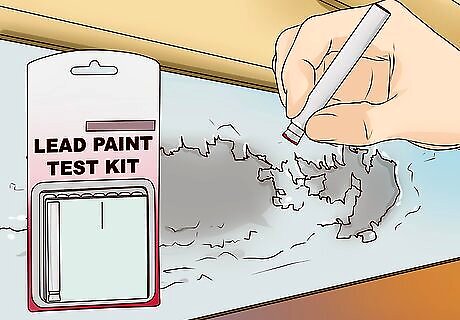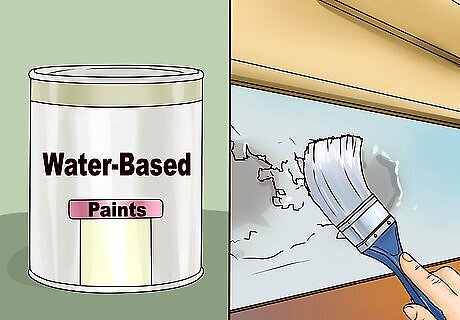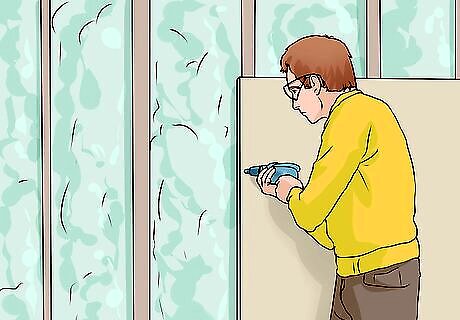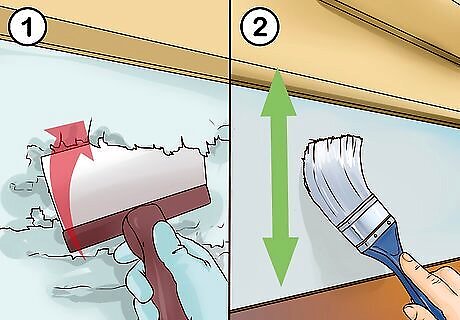
views
Looking at the Age, Condition, and History of the Paint

Determine if the paint is from 1970 or earlier. Most homes built before 1970 often have lead-based paint on the walls, doorways, stairwells, and baseboards. If your home is old and you know it was built in the early or mid 1900s, it may have lead-based paint. Often, historic buildings or homes that are old and have not been renovated contain lead-based paint.

Talk to the owner of the home, or the previous owners. If you do not own the home and are a renter, talk to your landlord about the age of the home. Ask them if they know if there is lead-based paint in the home. If you own the home, contact the previous owners to find out if they know if there is lead-based paint in the house.

Check if the paint is deteriorating. Examine the paint in the home to determine if it is peeling, flaking off, or deteriorating in any way. If it is lead-based, this may be cause for alarm. Lead-based paint that is deteriorating can pose a health hazard, as it will release lead dust as it breaks down. Pay extra attention to paint that is on doorways or stairwells. These areas usually get more wear and tear, causing the paint to crack, flake, and peel. If you notice the paint is deteriorating and suspect it may be lead-based, test the paint so you can address the issue immediately.
Getting the Paint Tested

Do a home test of the paint. You can buy a home testing kit for lead-based paint at your local hardware store or online. The kit will require you to test a sample of the paint for any lead. These kits are relatively inexpensive and easy to use. Keep in mind home test kits for lead paint are not always reliable. They will not be as accurate as a professional test on the paint.

Get a professional test done on the paint. Contact your landlord if you are a renter so they can arrange a professional test on the paint in your home. You can also contact your local department of health or a lead testing service in your area. Professional, qualified individuals can then test the paint in your home for a small fee.

Determine if the lead paint is hazardous. The professional test should tell you if there is lead paint in your home and if so, if it is hazardous to your health. Lead paint that is in good condition, where it is not peeling, chipping, or flaking, is not considered a health hazard. If there is lead paint in your home that is in good condition, you should still keep an eye on it to make sure it does not become damaged or start to deteriorate.
Dealing with Lead Paint

Paint over it if it's not hazardous. Lead paint that is in good condition can be painted over to seal it and prevent any lead fumes from entering the home. You can use water-based paints over the lead paints or encapsulants, which seal the lead paint so it won't chip. Doing this will ensure the lead paint is not a hazard.

Cover the lead paint with drywall. You can also cover the lead paint with a new surface, such as drywall. This will prevent the lead paint from getting damaged, exposing everyone in the home to lead.

Remove and replace the lead paint. Removing lead paint can be difficult, as you do not want to sand, power wash, or scrape off the paint without safety goggles, gloves, and a respirator. Breathing in lead dust can be toxic. Consider hiring a professional to remove the lead paint and replace it with water based paint so you do not put yourself or others at risk. Lead paint on doorways, windowsills, and stairwells can be replaced by removing the actual materials and putting in new materials.




















Comments
0 comment